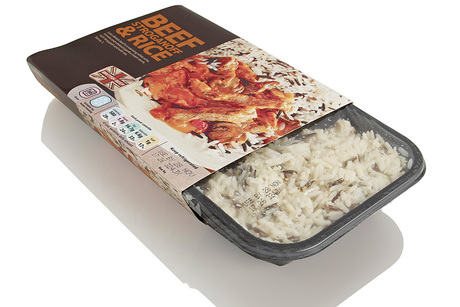Coding trends and technologies for ready meals

Manufacturers in the growing ready meals sector are facing increasing challenges regarding the labelling and coding of these convenience food products.
Ready meals are the convenient lifestyle choice for time-poor consumers desiring food choices which provide a combination of flavour, quality, nutrition and fuss-free preparation. While producers work to increase production efficiencies, improve margins and protect the integrity of their brand, a number of different stakeholders are increasing pressure on them for the labelling and coding of ready meals.
Both government and consumers are demanding clearer, more detailed food ingredients information. This includes specific allergen labelling, the introduction of the voluntary Front of Package Food Star Ratings and the newly proposed, more specific country of origin labelling.
Retailers, too, are demanding clearer codes, desiring precise characters that can be easily read by consumers when products are displayed on shelves or in retail cabinets; and are pushing for true-type fonts, similar to the coding and marking on shelf-ready packs, as well as 2D Data Matrix barcodes.
Added to the mix is the desire of brand owners to use the latest coding technology to protect their brand’s integrity. Beyond the obvious requirement for clear, precise compliance codes that complement the product’s brand and packaging design, some brand owners are exploring innovative uses for variable information and QR codes to build consumer engagement and enhance the perceived quality of their ready meal.
The technologies
Continuous ink jet
Continuous ink jet (CIJ) continues to be a leading solution for coding use-by dates and batch codes onto ready meal packaging due to its high speeds, easy-to-read codes and ability to print onto a wide range of porous and non-porous substrates, as well as uneven surfaces.
CIJ offers a wide range of inks approved for the food manufacturing environments, as well as retortable inks that change colour during retort and offer additional confirmation the process took place correctly.
Thermal ink jet
Thermal ink jet (TIJ) is one of the most efficient and clean coding solutions for controlled food packaging production environments. This technology uses hundreds of nozzles inside the printhead to achieve true-type fonts, graphics, logos, QR and 2D data matrix codes at print resolutions of up to 600 dpi.
Due to recent innovations in TIJ ink formulations, thermal ink jet now suits an even wider range of applications and substrates, like those typically found in the ready meal and convenience foods sector; for example, flexible packaging and cardboard sleeves.
Thermal transfer overprint
Thermal transfer overprinting (TTO) technology is ideal for flexible packaging and prints high-quality codes onto materials such as polypropylene, coated aluminium, paper and labels. TTO comes into its own when detailed information is required; for example, ingredients lists and nutrition panels. In addition to this, TTO can print the message in any orientation and so is not reliant on the direction of travel of the production line.
Self-adhesive labels
Self-adhesive labels can also suit some ready meal coding applications, particularly when additional variable information is required; for example, variable weight.
Laser
Scribing lasers print or ‘etch’ indelible and permanent serial numbers, batch codes, barcodes and 2D matrix codes onto substrates such as plastic, glass, paper and cartons. Laser technology provides the fastest code times compared to other coding methods, and is clean, environmentally friendly and can be highly cost effective, due to its low maintenance and no requirement for fluid consumables. Its suitability is dependent on the substrate to be coded and the resulting code is generally white text, which is etched onto a pre-printed black background.
While there is a wide range of technology options available, each offers slightly different benefits in terms of application and output. When looking for the right solution, manufacturers will benefit from choosing a technology partner with a range of technologies who can offer an unbiased approach, focus on the best coding outcome, and help to increase production efficiencies and improve margins.
Career upskilling: from food to product development chef
Former chef Zach Baudinet decided to take his years of food experience to the next level through...
A taste of flavours on trend in 2024
Understanding the flavours, ingredients and trends that will shape what we consume is essential...
What's new on the shelf this Easter?
Paper artwork-inspired chocolate eggs, sweet chilli products on show and bite-sized Polly Waffles...












